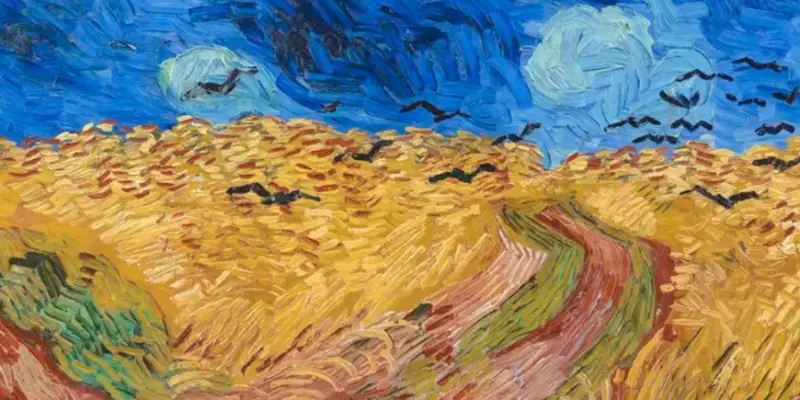Are you an artist frustrated by the slow drying process of oil paintings? While oil paints are known for their rich textures and vibrant colors, their extended drying times can be a significant obstacle, especially if you’re working on multiple pieces or facing tight deadlines. This delay can halt your progress and potentially disrupt your creative workflow.
The inconvenience of waiting weeks for an oil painting to dry can be exasperating. Not only does it delay the completion of your artwork, but it also impacts your ability to move on to new projects. The slow drying times can also be a challenge if you’re working on a series or need to make quick adjustments to your work.
How To Dry an Oil Painting in the Oven – 9 Tips provides an effective solution for speeding up the drying process. This article offers practical advice, including how to ensure proper ventilation, avoid common pitfalls, and use your oven safely. With tips on managing temperature, timing, and preparing your canvas, you’ll learn how to accelerate the drying of your oil paintings and get back to your creative process with confidence.
Table of Contents
How To Dry an Oil Painting in the Oven
Here are some tips on how you can dry an oil painting in the oven:
- Keep all the windows open to ensure plenty of ventilation.
- Wear a mask at all times throughout this process.
- Allow any solvents on the painting to evaporate before baking.
- Do not attempt to bake a painting mounted on a canvas made of synthetic or pressure-treated wood.
- Do not exceed a temperature of 200 F° (93 C°).
- Do not bake the painting for longer than 10 minutes.
- Let it cool down and gently test the solidity of the paint.
- If necessary, bake the painting for another 10 minutes.
- Leave your artwork to rest in a well-ventilated space.
Drying an oil painting in the oven is a dangerous process that requires planning and extreme caution . Although this method is not generally recommended by experienced oil painters, you can take your chances by observing the suggestions below to the latter.
. Although this method is not generally recommended by experienced oil painters, you can take your chances by observing the suggestions below to the latter.

Tips to Dry Oil Painting in the Oven
Ventilation and Protective Gear
Oil paints and the solvents you may add to them contain volatile organic compounds (VOCs). VOCs are particles released into the air when you mix oil paint with thinning solvents and other additives like desiccants.
VOCs can cause a range of health problems when you inhale them over an extended period. It is essential that you work in a well-ventilated space.
Keep the windows and doors open to allow enough fresh air to circulate. It’s a great idea to strategically place some large fans at the windows to direct the airflow efficiently.
Finally, protect yourself and avoid damage to your respiratory system by wearing a mask like this Reusable Respirator Mask  on Amazon.com, which is effective against vapors and gasses as well as dust particles.
on Amazon.com, which is effective against vapors and gasses as well as dust particles.

- Sealed & Comfortable: The sealing edge is made from food-grade elastic silicone gum, which fits the...
- Professional & Double Protection: The safety mask face cover for dust adopts double filtration...
- Fully Adjustable Comfort Strap: Face cover and safety glasses strap belt are suitable for most head...
Last update on 2025-07-07 / Affiliate links / Images from Amazon Product Advertising API
Solvents and Paints
The most commonly used solvents are turpentine and linseed oil. You’ll use turpentine to thin the oil paint and apply it more fluidly on the canvas or paper. Linseed oil also allows for a more fluid application.
Turpentine and other thinning or drying solvents and additives help spread the paint, and then they evaporate pretty quickly. They do not directly contribute to the drying or oxidization process.
If you add oil during painting to manipulate the consistency of the paint, you will extend the oxidation process. Linseed oxidizes the fastest of all the drying oils—linseed, walnut, poppy, and safflower.
Oil painting is often achieved by layering paint. To avoid waiting until a layer is dry enough to work on the next, use paper towels to absorb the oil:
- Place the piece of paper towel over the area of the painting you wish to dry.
- Leave it alone for about 10 minutes.
- Remove the paper towel and continue with the next layer of oil paint.

It’s important to remember that different pigments dry at different rates. One of the fastest to oxidize is burnt umber. Now, if you want to paint a colorful masterpiece instead of a study in umber, you can try water mixable oil paints.
Water mixable oil paints have undergone a change at the molecular level to allow the oil particles to bind with water. This makes them a great choice if you want to avoid using solvents when painting and cleaning your brushes.
A great advantage of water-mixable oil paints is that you can change the consistency with a very small quantity of water. Remember that these are still oil paints—they will undergo oxidation and not evaporation.
Canvas and Frame
You must avoid baking a canvas stretched onto a frame made of pressure-treated wood. Pressure-treated wood is treated with chemicals like Alkaline Copper (AC) and Quaternary Ammonium Compounds (ACQ).
Although these are less toxic than Chromated Copper Arsenate (CCA), which the Environmental Protection Agency banned in 2009, AC and ACQ produce wood dust that is dangerous to your health. The risk of inhalation and exposure increases when baking such a canvas in the oven.
Another risk you run when baking a painting in the oven is that the wooden frame will warp. Unfortunately, if the frame has warped, there is no way to straighten it.
Temperature and Time
Oil paints “dry” by a slow chemical reaction or polymerization. This oxidation takes time; however, it leads to strong bonds or polymers.
Speeding up oxidation in the oven changes the nature of these bonds and may lead to cracked or flaking paint. This is the case even if you bake your painting in a fan-based oven.
Air circulation will aid oxidization, but the paint will also dry matte. An oil painting left to dry on its own will retain its original gloss better than one baked in the oven.
You can try to adapt his science-based design to hold canvases that are larger than miniatures. Keep in mind that heat and air circulation are your main assets when speeding up oxidization.

Final Words
If you’re looking to speed up the drying process of your oil paintings, “How To Dry an Oil Painting in the Oven – 9 Tips” is your go-to guide. While oil painting inherently involves a slow drying process due to the nature of the materials used, such as linseed oil and organic pigments, this method offers a practical workaround.
By following the advice on ventilation, temperature control, and timing, you can achieve faster drying without compromising the quality of your artwork. Remember, though, that while this technique can help in a pinch, oil painting remains a meticulous and time-consuming art form that rewards patience.
Sources
- Wet Canvas: Can you heat-set traditional oils

- Reuters: World’s Oldest Oil Paintings In Afghanistan
- Mill Creek Entertainment: Incognito – Trailer
- Marek Juránek: Incognito- working process

- Picky Pens: Does Drying Oil Paint In The Oven Actually Work?

- Muddy Colors: Desperate Measures

- Do It Yourself: Health Risks Associated with Pressure Treated Wood

- MarcoFrisoniNJM: How to dry oil paint QUICKLY! Miniature heated box

- KevinOilPainting: Drying Oil Paint in MINUTES! Pro Secret Art Lesson

- Florent Farges – arts: Drying Time – Oil Painting Tutorial
- Paint Coach: PAINT TALK: Water Mixable Oil Paint – Everything you need to know
- Jackson’s Art Supplies: Oil Painting Guide: Paints And Mediums

